 I’m often asked by clients if they would be better off with a fence or a hedge to surround their garden. There are pros and cons to each. Here are some of the main things to consider:
I’m often asked by clients if they would be better off with a fence or a hedge to surround their garden. There are pros and cons to each. Here are some of the main things to consider:
Fence Benefits . |
Fence Downsides |
|
|
Hedge Benefits . |
Hedge Downsides |
|
|
Combinations
If you are keen to have a hedge but need to screen or secure your property, one approach is to put up a temporary wire fence and grow the hedge along one side of it. Eventually, the hedge will grow through the wire. (Just be a little careful when you are trimming it.)
You can grow almost any shrub and train it into a hedge. Some obviously work better than others, but it’s definitely something you can have fun with. Before you get too carried away with an over the top hedge choice, here’s one thing to bear in mind…
Traditional Works Well For Good Reason…
What are you going to put next to the hedge? For example, using a variegated shrub with bright pink flowers may seem like a good idea. But if your plant border is also full of red and orange flowers, it may not look so good when everything is flowering together!
This is why I like to be pretty boring with my hedge choices. I tend to go for plain green because it’s a good colour backdrop for everything else I want to do in the garden.
The same goes for fence colours. Yes, I know you can get vivid cerise fence paint but that doesn’t always make it a good choice with everything else you have in your garden!
Favorite Fence Styles:
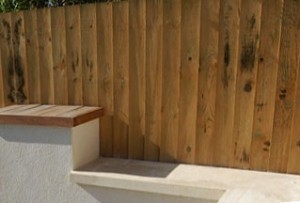
I prefer hand-built fences made in situ in the garden rather than pre-made panels. Hand-built fences tend to be stronger, and you can make them fit the size of the area. Pre-made panels rarely fit exactly how you’d like, which means you typically need to cut them to fit the space. This type of hand-built featheredge fencing (see photo at left) is very popular here in the UK.
If your existing fence is still strong but looks ugly, or it happens to be the neighbour’s fence, my favourite trick is to cover it with willow screening.
For a modern look, I love using simple tile batten (approx. 1″ x 2” wide pressure treated timber). It’s not ideal for total privacy but it does work for simple screening.
Also consider…
SGD reader, Janine, pointed out the following important things to check out:
Please can you add that people should check planning rules, for putting up fencing in particular, as there may be a maximum height and if they grow something like leylandii as a boundary. (Different countries apply different rules…. Plus its always a good idea to check your boundary lines especially if you have neighbours, who might object to a fence but not a hedge (if they’re good neighbours they might even share the cost 🙂. If the property boundary is adjacent to farmland, then the farmer must be informed especially if he has live-stock including horses.
More Fence Examples
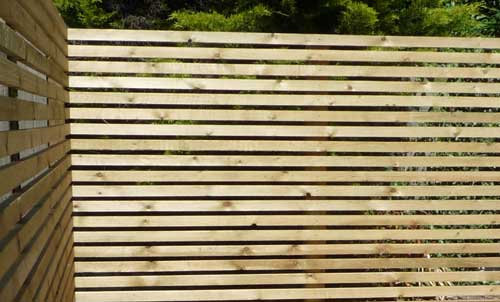
Favourite Hedges:

Laurel is the king of hedges. It’s got beautiful large evergreen, glossy leaves. It can take shade, sun, dry and wettish conditions (but not waterlogged soil).
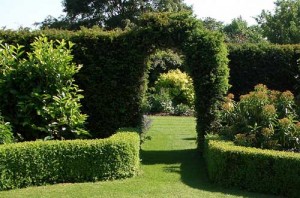
Yew is another favourite of mine, but it can be rather slow to establish and doesn’t cope well with wet soils.

Native hedge mix is probably the one I use the most because it blends well with English countryside locations and is great for wildlife. It is also fairly inexpensive when bare-root plants are purchased. The only drawback is that it’s not evergreen.
Good Suppliers:
It’s worth hunting around for a good fencing stockist rather than just what’s in the local DIY store because quality and prices can vary dramatically.
A good nursery or garden centre can help you with hedges. If you put your order in ahead of time for a good quantity, you likely be able to negotiate a discount.
What Are Your Favourites?
Which fence or hedging plants have impressed you most and why? Please leave your comments below.
If you would like the Successful Garden Design cheat sheet and video on how to add the WOW factor to your garden click on the image below…
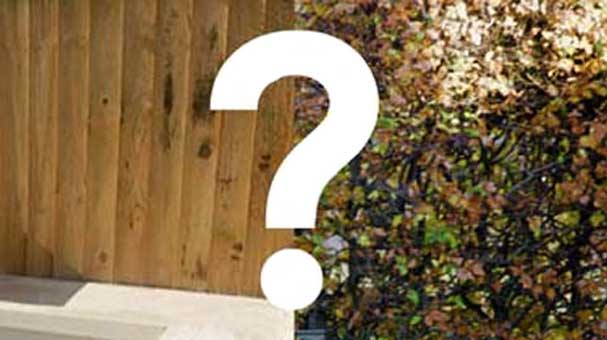
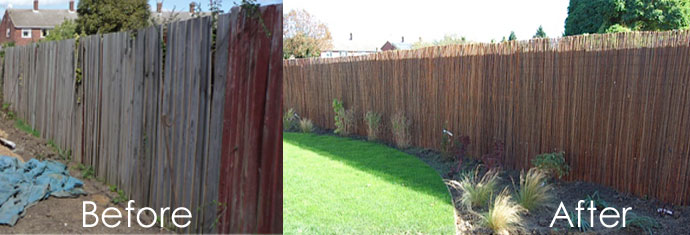

26 replies to "Fence or Hedge Your Garden – Which is Best?"
When full privacy isn’t required), I like roses, lilacs, burning bushes, etc. I’ll have to check out laurel hedging (as I hadn’t previously heard of it).
Hi Mike,
Oh some good choices there, I do like burning bushes especially, not ever used them for a hedge though.
oooh what about a vertical garden? i have a timber fence and i add plants to the vertical face!
Hi Felicity,
That’s a great idea! I haven’t done much vertical gardening but have seen some great examples – actually was one of them on your blog a while back? If so do add the link to it here!
Hello Rachel
Will you please confirm the cost of this course in UK pound sterling (£). Thank you
Hi Cat
The normal price in sterling for the full garden design course is £197 but there’s a special offer on the video at the moment for approx £127 – I say approx as it will depend on Paypal’s exchange rate when you buy it, I’ve just checked and it’s currently £122!
In spain we use a lot the heather (erica) branches in a screening mesh attached to the fence, it has dark thin branches, “BREZO”, a bit expensive, cheaper is cane, cut half way and place in lines, also now in fashion is “japanese cane” a very thin version of bambu, lines together and meshed together, but all depends in space, budget, time available for maintaning the fencing, I would use climbing plants, like jazmins, flowering bignonias, etc… if it was possible, also the maroccon trelis makes a good effect. Regards
Hi Oscar
I’ve seen them used in Spain and they do look good. I think we can also get the heather ones in the UK, but like you say they aren’t cheap! I have used the cane too but find they don’t last quite as long as the willow, but do look good too.
I like your suggestion of the Moroccan trellis with climbers, the gaps are sufficiently small that it makes for really effective screening.
Rachel
Personally, I’d go for a fence. Besides securing the property, I think it’s more versatile since I can alter its appearance not only with paint or garden decor but with hanging plants or potted plants. It also gives some sort of break in the very green landscape. Although you are right about the end cost.
Hi Rachael that willow screening looks fab, I never knew you could have that in a garden! Taking on board security as mentioned in the comments, is it ok to have another fence behind the screen or is that just wasting resources?
Hi Sarah,
The willow screening can be purchased in free standing panels or if you buy the rolls they do need attaching to an existing fence. So if you want to be secure then yes you would need another fence.
You can always used reclaimed materials for the security fence, then attach the willow. Doesn’t matter quite so much if it’s a mixture then, assuming there aren’t neighbours to consider, fine if you live in the middle of nowhere!
It all depends on what type of garden it is and what style of design the client wants.
A custom fencing is better, I believe. One can have the fencing done the way one wants and choose their own style and size.
Deciding between fencing and hedges is actually kind of hard. However, after reading this, I think that there are more benefits to having fence put in. I also liked how you included which types of fence were the best, thanks for the information.
Hi Rachel,
What would be the best hedge for Sidcup area, London: around 110 meters long for a newly established Vegetable Garden? I want a mix or ornamental+Mechanical one..
Hi Rachel and fellow readers – one thing I would add is that if you live in an area with deer or foxes etc or have dogs that like to explore a fence is much more secure. However, I love hedges so if animals might be a challenge try a very prickly ground shrub hedge. J
PS…. If going for boundary hedges think about your local Native hedgerows like Blackthorn or a mix of native hedgerow – Blackthorn, Dog Rose, Bird Cherry. I like Laurel hedges – no spikes and need to be planted in two rows to get a good hedge. Particular favourite is Spotted Laurel Hedge – Aucuba japonica ‘Crotonifolia’.
I have a beautiful laurel hedge that I inherited 4 years ago. However, the previous owners did not maintain the neighbours side and neither did the neighbour. Consequently it is very deep and leggy. Ive find my best to tidy it up but it really need s chainsaw to take it right back. I know it will be ugly for the neighbours for a while so not sure if they’ll go for it. Any other suggestions?
Hi Amanda,
Apologies, only just seen your question – I think your solution is the best long-term option, even though it’s quite drastic. Laurel will regenerate fairly quickly, so hopefully won’t look too much of an eyesore for long. And if it does look bad to begin with you could always get some bamboo or willow on a roll to temporarily screen it with.
I have a beautiful laurel hedge that I inherited 4 years ago. However, the previous owners did not maintain the neighbours side and neither did the neighbour. Consequently it is very deep and leggy. Ive done my best to tidy it up but it really need a chainsaw to take it right back. I know it will be ugly for the neighbours for a while so not sure if they’ll go for it. Any other suggestions?
If you do it just before the sap starts to rise just before Springtime then the laurel should recover fairly quickly, so it shouldn’t look too bad for too long. But failing that I suppose you could always get it cut back and put some bamboo screening to hide it while it re-grows. Good luck!
I have grown a ficus over my fence – so I have a fedge (or is it a hence). It looks great with good security and splendid greenery – win/win!
Fedge! I love it! Definitely the best of both worlds! :o)
I’m in the process of pulling vast quantities of bramble and cutting overgrown elder out of my very scrubby hawthorn hedge. I’m hoping there is sufficient hawthorn to lay the hedge but if not, being in a small rural village, I’m thinking of replacing it with a double row of beech and hornbeam which I hope will give lovely autumn colour and by mixing the two it will have more of a natural appearance more suited to a small very rural village rather than a perhaps more suburban feel of a single species hedge.
I don’t envy you the job of getting brambles out of a hedge, that sounds like very hard work!
Beech and hornbeam are lovely. Good luck with it all :o)